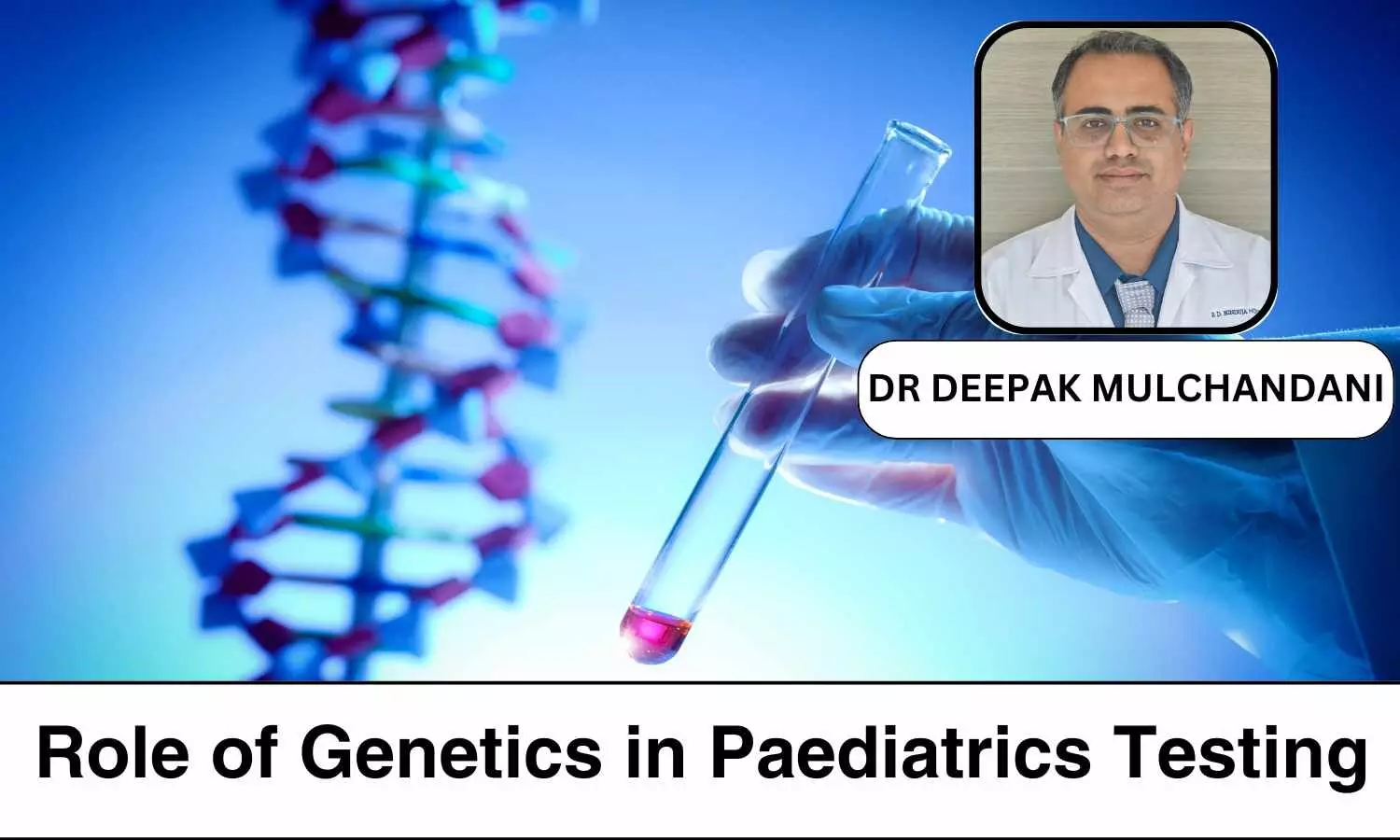Crucial Role of Genetics in Pediatric Testing and Diagnosis - Dr Deepak Mulchandani

Each person's genes are "blueprints" for their body's appearance and function. Chromosomes consist of DNA, and fragments of this DNA constitute genes. Every cell contains DNA, a long, spiral-shaped molecule that holds our genes.
A human receives one copy of a gene from each parent, creating a pair. Your cells possess those genes, and as these divide and replicate, your body eventually generates enough cells to build up your entire body. The genes and chromosomes in each cell of the same line should not change when the cells divide.
Occasionally, errors in the division of genetic material emerge during division. That's called a mutation. Such mutations can lead to genetically transmitted diseases or even cancer. They are most common in children, but they can happen at any age.
Genetic testing is required to diagnose hereditary diseases in children. The concept of inheritance, and hence our present understanding of genetically transmitted diseases, is due to the initial efforts of Gregor Mendel in 1885, who studied the pea plant and the way it transfers its characteristics to the next generation. This work established the modes of inheritance of our traits, which we pass on to our subsequent generations.
The most significant aspect of this work was the investigation into the inheritance patterns of specific diseases. Some diseases are inherited in a dominant pattern. The problem can be caused by one copy of a faulty gene (from one parent). Children can be affected by an autosomal dominant disease 50% of the time. On the other hand, two copies of the defective gene—one from each parent—are needed for an autosomal recessive condition to manifest.
Congenital birth defects caused by inheritance are rare; however, due to India's high birth rate, a very large number of infants with genetic disorders are born every year, to the tune of almost half a million newborns with malformations. The above statistic also implies that families may need genetic counselling to understand the type and nature of disease.
Most patients who require further identification of genetic compositions and mutations, if any, are mothers who have had recurrent abortions or children who present with chromosomal anomalies, syndromes such as Down's syndrome, or children with developmental delay and/or mental retardation. The branch of medical genetics has grown by leaps and bounds in the last 50 years.
However, it was only on April 14, 2003, that 92 percent of the human genome was matched as per the existing lab methods. However, January 2022 saw the completion of the final gap-less assembly.
Since then, our ability to identify rarer diseases has improved tremendously. It has also brought down the costs of whole exome sequencing from nearly Rs. 40,000 to less than Rs. 20,000. The detailed knowledge of the human genome will provide new avenues for advances in medicine and biotechnology.
Genetic tests can show a predisposition to a variety of illnesses, including breast cancer, blood disorders like thalassemia, haemophilia A, cystic fibrosis, liver diseases, and many others. Also, the aetiologies for cancer, Alzheimer's disease, immunodeficiency diseases, and enzyme deficiency disorders are now well within the reach of paediatricians.
Though the applications are less useful for children, further research may solve the problem. In children suffering from critical illness or recurrent illness, genetic testing has come as a boon. Genetic testing is diagnosing an increasing number of children, as long as the treating paediatrician maintains a high level of suspicion.
The development of rapid genomic testing (RGT) and ultra-rapid genomic testing (uRGT) has been proven possible by advances in technology, bioinformatics, and analytical skills. This enables for diagnosis in a matter of hours or days, as opposed to months.
Time-critical settings like neonatal or paediatric intensive care units (NICUs or PICUs) can now implement this technology. Applications of genetic testing also extend to diagnosing the feasibility of continuing pregnancy if a previous child had severe genetic alterations.
Procedures like chorionic villus sampling or amniocentesis can provide material for yet-to-be-born babies to undergo mutational analyses. The presence or absence of a significant abnormality can assist the treating gynaecologist and her team in making further decisions regarding pregnancy continuation.
Things to keep in mind
If routine lab tests fail to reach the correct diagnosis, then it is prudent to order genetic testing. If genetic testing shows a significant genetic mutation, then it should be read in conjunction with clinical, pathological, and radiological findings.
There are also concerns about the need for explicit consent in order to proceed with testing. Any member of the treating team can obtain consent, but genetic counsellors possess specialized training to guide the family in making informed decisions about genetic testing and to understand and adapt to the medical, psychological, and familial implications of genetic conditions.
Similarly, the results are often difficult for the family to interpret, and considering that a critical illness is involved, the family may not be ready to accept the diagnoses. The counsellor here also plays a major role in providing key information to the family.


